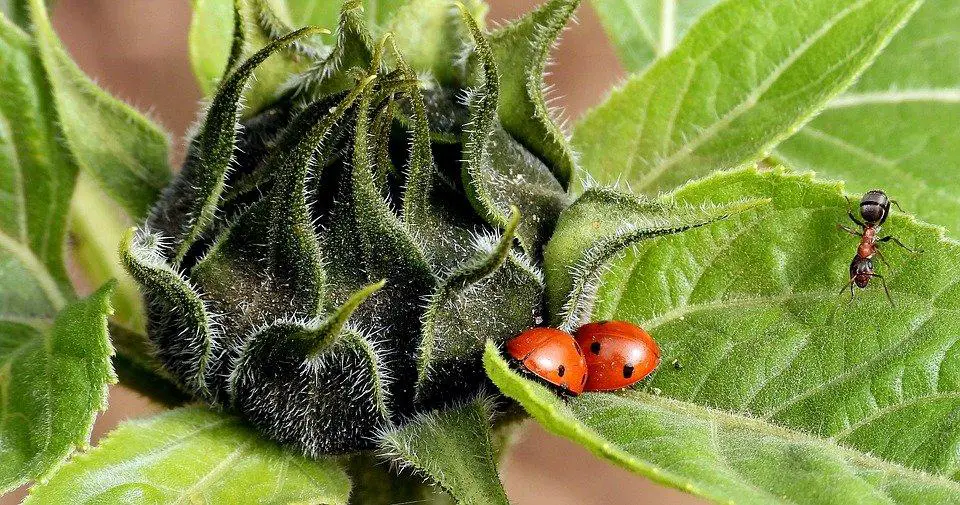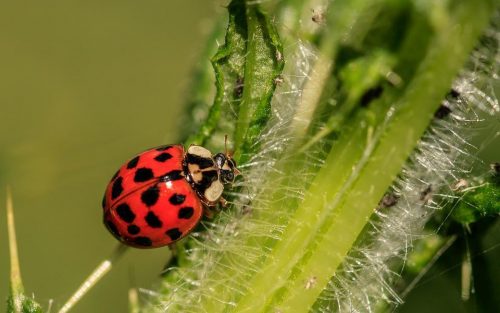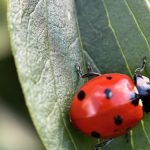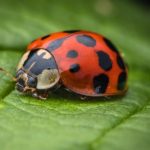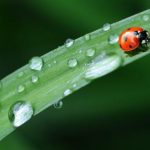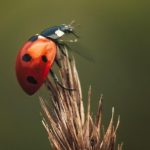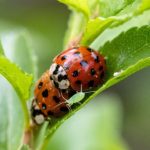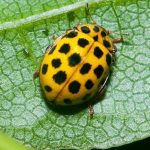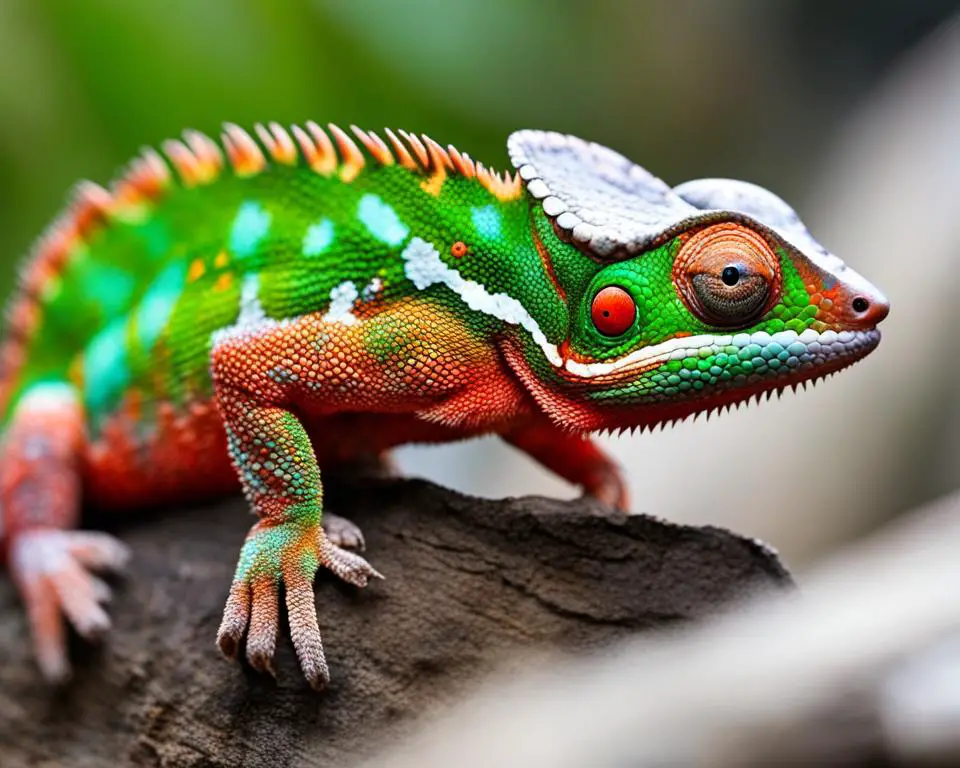Although ladybugs and ants do not consume one other, there is some interaction between the two species of insects. Aphids create honeydew, which ants like eating. Since ladybugs, on the other hand, prefer to consume aphids, this can lead to competition between the two insect species. Aphids are a food source for ladybugs, but ants are working to keep them around. Aside from this one similarity, there are no other connections that can be made between ladybugs and ants.
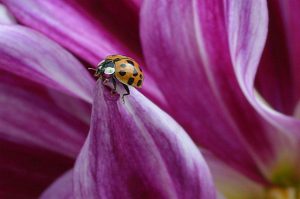
Ants because of the sweet excrement they produce protect aphids. They engage in combat with other predators, such as ladybugs, that are after aphids for food. In a battle against so many aggressive ants, ladybugs don’t stand much of a chance. When they come across a colony of ants that guard aphids, they won’t even bother trying to defend themselves; instead, they will just flee to a different location. In point of fact, there would not be a victor in that so-called “war.” Ants and ladybugs do not have an antagonistic relationship; rather, they just pursue distinct goals.
Figure: Ants (https://pixabay.com/photos/peony-flower-bud-ants-rain-1414875)
Do ants eat ladybugs?
Ants are not often pollinators, as many people believe; rather, they forage for food and consume nectar. They do everything they can to keep ladybugs away from their aphid farms. On the other hand, kids typically cannot accomplish this feat on their own. There is frequently a fight for dominance, and the only time that Ants are able to drive away Ladybugs is when there are a sufficient number of Ants.
Are Ants and Ladybugs Enemies?
Ants and ladybugs do not aggressively predate each other, and for both species, the other is more of a nuisance than a big threat or a prospective food source. Ants and ladybugs are not adversaries; they do not actively predate each other. They have coexisted for a million years, and despite their proximity to one another, each has been able to thrive despite occasional skirmishes. On the whole, though, they have avoided significant confrontations.
Do ants and ladybugs fight?
Ants are not considered to be food by ladybugs, which are known to be extremely vicious predators of other kinds of insects. Even ants, which are sometimes carnivorous, do not include ladybugs as part of their food intake. However, there are several types of ants that prey on ladybugs and even kill them on occasion.
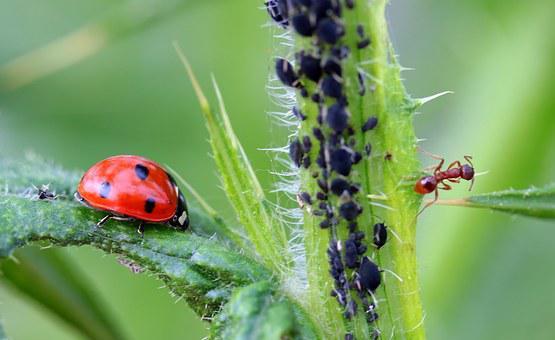
What is ladybugs’ favorite food?
There are several distinct kinds of food that ladybugs consume, and these foods do not all taste the same. The majority of their diet consists of several types of plants, as well as fruits and insects. Aphids, on the other hand, are ladybugs’ go-to meal of choice. Aphids are a pest that may be found on many different kinds of plants. Ladybugs have a special fondness for aphids, which gardeners will recognize and enjoy.
What are the 5 things ladybugs eat?
The ladybug enjoys eating a wide variety of insects, including scale insects, white flies, mites, and aphids. As larvae, ladybugs feed on a wide variety of unwanted insects.
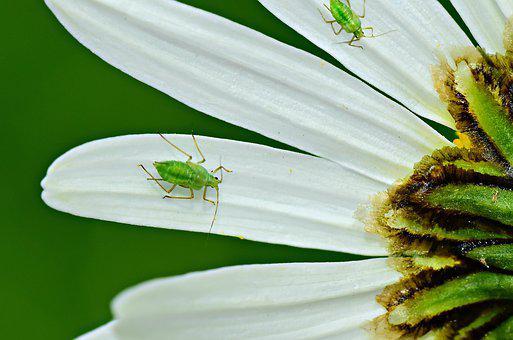
In what situations will ants attack ladybugs?
In two situations
- When a ladybug lands in a nest of ants
When ants become aware that another insect has come close to their nest, they will view it as a potential danger and make every effort to eliminate it from their immediate area. The ants strike in order to protect themselves, and it is up to the ladybug to attempt to get away since, if it is not successful, the ants will squash the ladybug under their feet.
- The ladybug finds ants protecting aphids.
Because there are aphids on a leaf, there is a possibility that not all of the ants are actually on the leaf. As a result, the ladybug will be able to consume aphids, but ants will make it difficult for it to do so. The event that is stated in the first bullet point might take place if the ladybug remains on their list for an extended period of time.
It is important that there are a large number of ants present while a ladybug is being attacked by ants so that the ladybug can be buried. They will attempt to kill the ladybug by dragging her legs as they bite them, and if they are successful, they will bring the ladybug back to the nest and consume it. Ants, in addition to retracting their legs, bite the ladybug and release formic acid as a byproduct of this behavior. The only way for a ladybug to avoid being killed in that assault is to flee as quickly as possible.
What bug eats ants?
You might not be aware of this, but almost every animal that consumes other insects and has jaws large enough to hold an ant also consumes ants. The following is a list of some of the insects and other tiny creatures that often feed on ants:
- Other kinds of insects including beetles, caterpillars, and flies are also included
- Various types of spiders, such as jumping spiders and black widow spiders
- Snails and other types of animals with tough shells
- Snakes
Do ladybugs eat ladybugs?
Many insects and beetles will consume members of their own species, which is something that you probably already know. It might come as a surprise, but ladybugs really pose a threat to other ladybugs. However, this is conditional on the species with whom you are working. While some ladybugs will not consume ladybug larvae or eggs, some will do so. You will discover, for instance, that the Asian Lady Beetle or the Harmonia Axyridis will feed on members of its own species. This species is not indigenous to either North America or Europe, despite the fact that it may be found in both of those regions.
However, it is far more hostile than the local ladybugs, and it is quickly expanding its territory. This ladybug first appeared in East Asia, but it has now made its way to other continents, including Africa, Europe, and North America. The Asian lady beetle will consume nearly any food that it can find. They are willing to resort to any means necessary in order to feed and stay alive. Because of their voracious appetites, researchers think that Asian lady beetles pose a risk to the world’s diverse array of plant and animal life. In addition to this, they are not intimidated by the prospect of competing with other invertebrates for food and habitat.
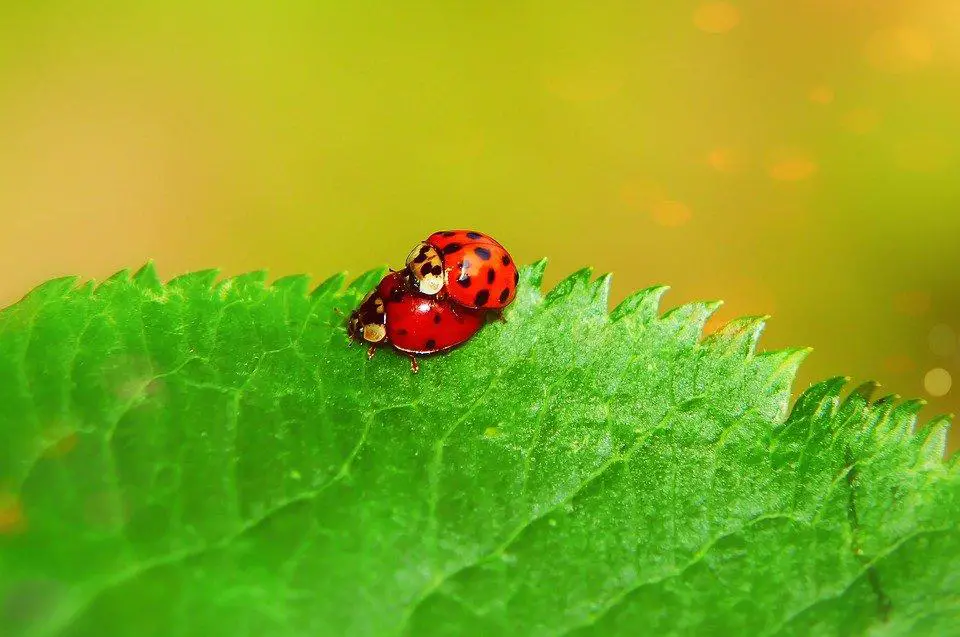
The fact that this ladybug will eat native ladybug eggs and larvae means that it poses a significant threat to those species. It will turn its attention to native ladybugs if it is unable to locate aphids and other small insects.
How do ladybugs protect themselves from predators?
There are a variety of different defense systems that ladybugs have that help them live. One of their defense mechanisms is their vivid color, which signals to other animals that they do not have a pleasant flavor. There are several kinds of ladybug that have coloration that looks quite similar to that of dangerous insects.
When they are agitated, they will also exude offensive-smelling material. Because this material is not particularly appetizing, even if another animal is enticed to consume a ladybug for the first time, it is unlikely that they will do it again.
It’s possible that ladybugs will pretend to be dead if the first two defense systems fail. This is an excellent strategy that ladybugs adopt to protect themselves from being consumed since most predators would not attempt to search for items that are not moving.
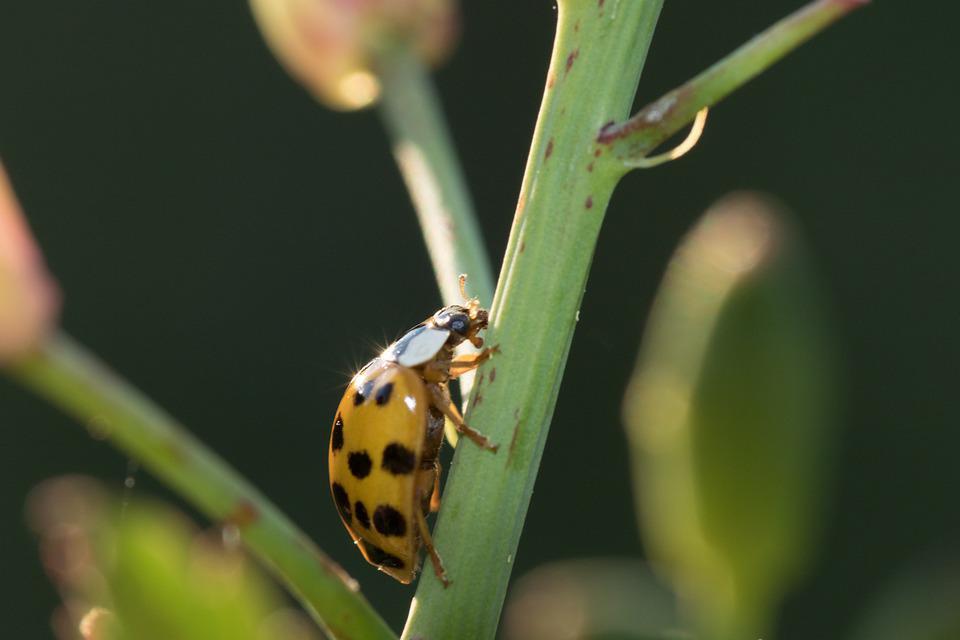
Are ants willing to attack and eat the larva of ladybugs?
This situation plays out almost exactly the same as what happens with ladybugs, with the exception that ladybug larvae, while being bigger, do not have a protective outer shell. They are less likely to feed on aphid colonies that are being well tended to by Ants, and Ants are more easily able to overwhelm a Ladybug Larva. In general, ladybug larva will choose their location for feeding more wisely. Ladybug larva are less likely to feed on aphid colonies that are being well tended to by Ants.
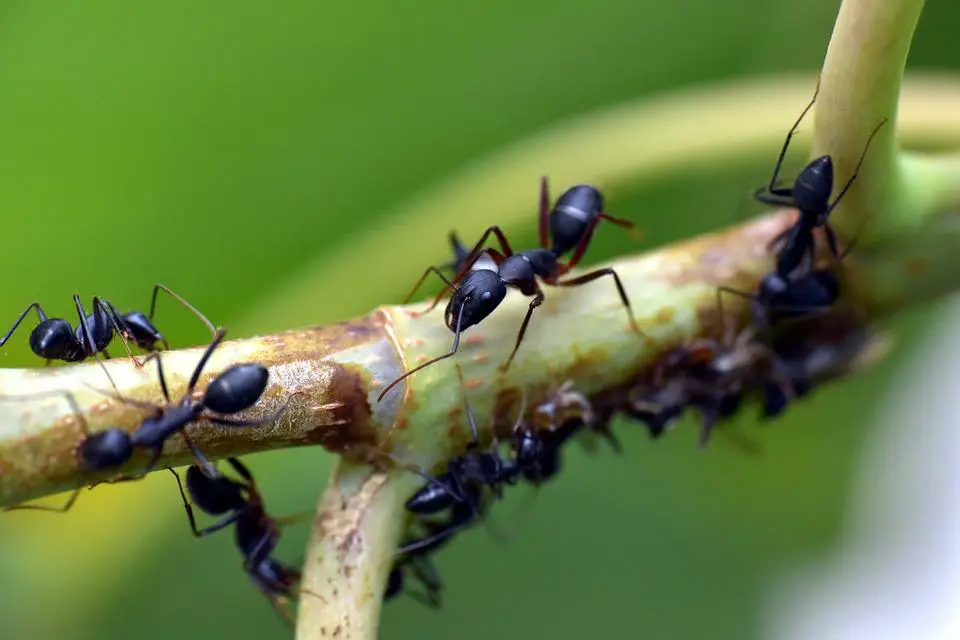
What Happens to Wasps After They Sting? ???? (Explained)
Wasps stinging behavior explained: After stinging, wasps typically suffer a grim fate. Their stinger becomes lodged in the victim’s skin, resulting in the wasp’s ultimate demise. This is due to their anatomy, as their stingers are designed to pierce flesh and crucially, don’t have a barb, allowing them to sting repeatedly. However, once the stinger is embedded, the wasp’s abdomen tears as it tries to fly away, leading to its eventual demise.
Can Ladybugs Get Rabies like Marine Mammals?
Can marine mammals contract rabies?? While it is known that terrestrial mammals like dogs or bats can contract rabies, there is little evidence to suggest that marine mammals, like ladybugs, can experience this disease. Rabies primarily affects mammals with teeth, which ladybugs lack. Hence, ladybugs are not susceptible to rabies.
When do ants and ladybugs meet up?
Ants cultivate a number of symbiotic partnerships with other insects and bugs, including mealy bugs and Aphids, which are both to the benefit of both parties. Aphids and mealy bugs are responsible for sucking the sap out of the stems of plants and flowers, which results in the production of honeydew. Ants utilize this nectar-rich resource as a source of food. In exchange, ants will guard feeding aphids and mealy bugs while those insects are consuming their food.
In order to continue this activity even when they move their nests, ants have been observed transporting aphids with them on their bodies.
Aphids, on the other hand, are one of the meals that ladybugs like eating the most. They will hunt them with a ferocity that is unmatched, and they will also mate and lay eggs in close proximity to aphid colonies so that they and their young have a steady source of food.
